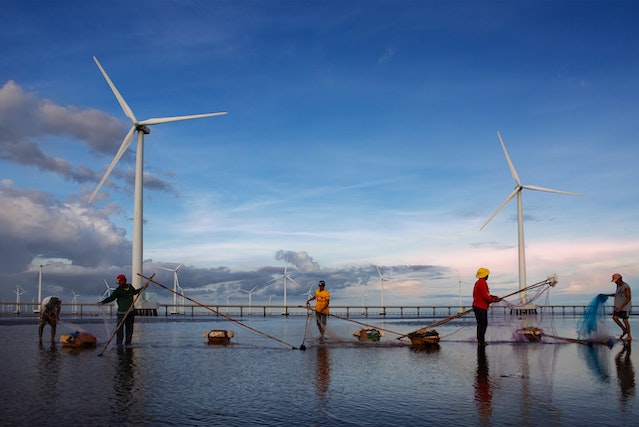As the world continues to grapple with the challenges of climate change and the depletion of fossil fuels, the need for clean and sustainable sources of energy has never been more pressing. Wind energy stands as a beacon of hope in the pursuit of a greener, more sustainable future. In this blog, we will explore the fascinating world of wind energy, its history, its benefits, and its potential to revolutionize the way we power our world.
The Origins of Wind Energy
Wind energy is not a new concept; in fact, it dates back thousands of years. Historically, windmills were used for grinding grain, pumping water, and other mechanical tasks. The windmill, with its iconic rotating blades, has been a symbol of human innovation for centuries. However, it was not until the latter half of the 20th century that wind energy began to be harnessed for electricity generation on a larger scale.
Modern Wind Turbines
Modern wind turbines, or windmills, have come a long way from their humble beginnings. These towering structures consist of three main components: the tower, the rotor (blades), and the nacelle (housing the generator). When the wind blows, it causes the rotor to spin, turning the generator and producing electricity. Wind turbines come in various sizes and designs, ranging from small turbines for residential use to massive offshore installations.
Benefits of Wind Energy
- Clean and Renewable: Wind energy is one of the cleanest and most sustainable sources of electricity generation. Unlike fossil fuels, wind energy produces no greenhouse gas emissions or air pollutants, making it an environmentally friendly choice.
- Abundant Resource: Wind is a nearly limitless resource. Wind turbines can be installed in a wide range of geographic locations, including onshore and offshore sites, harnessing the power of the wind wherever it blows.
- Cost-Effective: Wind energy has become increasingly cost-competitive with traditional fossil fuel sources. Advances in technology and economies of scale have driven down the cost of wind energy production, making it an attractive option for both investors and consumers.
- Job Creation: The wind energy industry has the potential to create numerous jobs, from manufacturing and installation to maintenance and operation. This can stimulate local economies and provide opportunities for skilled workers.
- Energy Independence: Relying on wind energy reduces a nation’s dependence on imported fossil fuels, enhancing energy security and reducing vulnerability to price fluctuations in the global oil market.
Challenges and Solutions
While wind energy offers many advantages, it is not without its challenges. Some of the common issues include intermittent energy production (as wind isn’t constant), land use conflicts, and concerns about the impact on wildlife, especially when turbines are placed in sensitive ecosystems. However, researchers and engineers are actively working to address these challenges through technological advancements, improved grid integration, and careful site selection.
The Future of Wind Energy
The future of wind energy looks promising. As technology continues to evolve, we can expect more efficient and cost-effective wind turbines. Offshore wind farms, which harness the stronger and more consistent winds over the ocean, are also gaining momentum as a major contributor to clean energy generation. Additionally, innovations like energy storage systems and smart grids are helping to stabilize and distribute wind energy more effectively.
